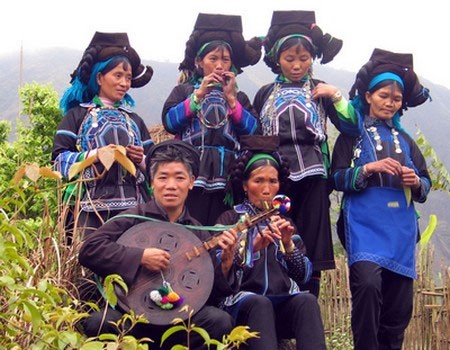(VOVworld) – The Ha Nhi have developed a diverse folk culture of songs, musical instruments, and dances.

The Ha Nhi in Lao Cai province |
The Ha Nhi live in the high mountains with little interaction with other ethnic groups. Their songs and dances have fostered a community bond and enabled the Ha Nhi, who have no written language, to transfer their culture from generation to generation.
Lý Mở Chừ, a Ha Nhi man who lives in Mường Tè district, Lai Châu province, says: “The Ha Nhi songs and dances are important. We don’t have a written language. We teach our children songs and dances to preserve our ethnic traditions.”
The Ha Nhi have many call-and-response songs and love duets that young couples sing while dating.
When a young Ha Nhi man and woman sing a duet during a date, the man often plays a leaf-horn or jew’s harp. He picks a fresh leaf, folds it, and blows on it to make beautiful, clear birdlike sounds. He sometimes also blows into a straw and uses his two palms to make sounds.
Le Sy Tho, a researcher of the Ha Nhi group at the Vietnam Museum of Ethnology, says: “Young Ha Nhi people talk and sing to get to know each other. Young Ha Nhi men observe young women’s daily activities. For example, they will look at the wood stack at a young woman’s house. They believe that the bigger the wood stack, the more diligent the woman. Then they will use music to flirt with her.”
At festivals, funerals, and weddings, the Ha Nhi use drums, cymbals, and gongs played with a quick rhythm. The Ha Nhi have melodies for particular occasions, such as welcoming guests, inviting guests to drink wine, at a funeral or housewarming ceremony, to celebrate new rice, or while weaving fabric.
Le Van Thiet works at the Vietnam Museum of Ethnology: “The dances reflect their customs and work – for example, the weaving fabric dance. At the celebration of a new crop, the biggest Ha Nhi festival at the beginning of the year, they perform a community religious dance while a shaman prays.”